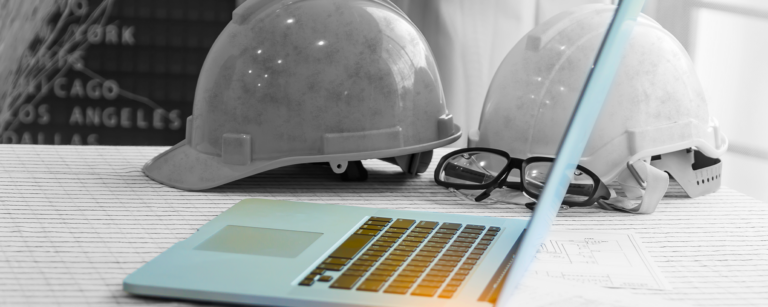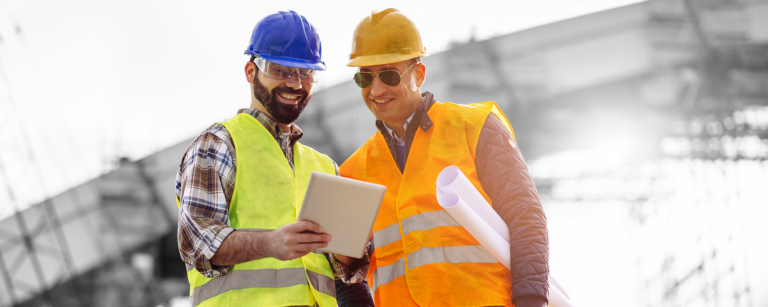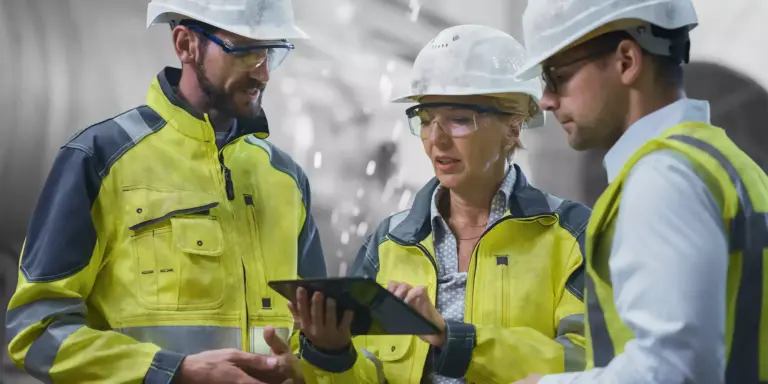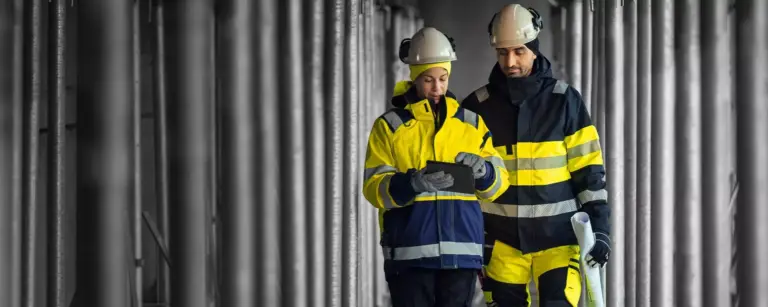Planning New Projects in a
Post-Pandemic Landscape
November 18, 2020
Many of us have been thrown into a situation we’ve never been in – a global pandemic featuring COVID-19. While we may have planned for the typical unexpected challenges as far as construction projects go, no script existed for this.
But the pandemic’s extraordinary, far-reaching impact has also presented us with a rare opportunity to completely rethink how to approach project planning going forward. With its initial effects now in the rearview mirror, we have a chance to figure out what we might do differently should a similar event occur in the future.
So, where do we go from here?
Safety Measures
Let’s start off by addressing what got us to this point: a monumental public health crisis. Any planning will now have to include more focus on safety measures that go beyond merely preventing physical injury at job sites and back offices. Personal and public health considerations are also sure to figure more heavily into project planning. Extra precautions implemented during the first months of the pandemic, such as hand sanitizing stations and more frequent cleaning of equipment and workstations, can and should remain in place for their overall hygienic benefit. An indirect potential benefit from such precautions may be fewer sick days taken that would otherwise impact productivity levels.
Risk Scenarios
Minimizing illness outbreak has now become just one of the risk scenarios to keep tabs on besides the many external ones like weather, permit delays and economic slumps. How do you begin to plan for such wildly different scenarios? By adopting software with planning, scheduling and risk-management capabilities. With the right software, you’ll be able to more effortlessly perform realistic scheduling and budgeting scenarios. Not only will this help you assess the potential risk impact ahead of time, it can give you the peace of mind you need just from knowing you can better plan for these and other unforeseen delays and avoid project disasters.
Supply Chains
You can also add supply chain disruption to these risk scenarios. In even a normal year, no one should ever assume the vendors in a supply chain will automatically be around year after year, let alone after what we are experiencing with COVID-19. Ask yourself, are the suppliers you were working with pre-pandemic still in business? Are they able to continue handling delivery of the products or services within your volume and timeline requirements? Do you have another supplier lined up for a just-in-case circumstance? You may have to monitor your vendor relationships throughout the project so you’ll know when you have to make adjustments or switch to a backup supplier. The right software can help you manage this process and your contracts. If the next hiccup in the supply chain is due to something as widespread as a pandemic, or a localized disaster or some other national crisis, you’ll at least have created a backup plan to help mitigate any repercussions on your overall schedule and budget.
Software Tech and Beyond
If you’ve hesitated investing in newer, more advanced technologies because of the perceived learning curve, upfront cost or simply a reluctance to change existing processes, now might be a good time to reconsider. Encourage your team to consider such technologies that can streamline your efforts, such as:
- Augmented reality (AR). The pandemic made all in-person interaction nearly impossible. But construction companies with AR could bridge that gap. For example, they had the ability to show team members how a proposed change or a real site hazard can impact a build by superimposing images atop real-world physical environments seen through a camera lens. It kicks remote collaboration up a notch while maintaining workflow and supporting informed decision-making.
- Building information modeling (BIM). The BIM process creates an interactive 3D model of your project by linking the latest building data to individual components within it. As new information becomes available or when risk scenarios occur, the linked data can be updated in real time and accessed from anywhere. This is key not only at the critical planning stage but throughout the project. Like AR, BIM is remote-friendly, allowing everyone to make timely decisions using the same current information.
- Robotics. Labor gaps and ongoing shortages — not to mention the impact of any future lockdowns — can be shored up with robotic technologies that perform the more repetitive manual tasks like painting or loading materials. They not only help maintain critical productivity levels at a steady pace without breaks, they also add safety to the job site, reducing risk of injuries that can result from fatigue or repetitive motion.
Where you go from here depends on how your company chooses to process the current pandemic experience. Those who learn from it will likely be at an advantage moving forward. Ask yourself, what lessons have been learned? How can they be applied to improving project planning? What other unrelated construction risks did the pandemic reveal that may be addressed as part of a more robust risk-management strategy?
InEight’s user-friendly project planning, scheduling and risk management software affords you control and visibility into all the moving parts of your project for maximum efficiency. You’ll have the ability to gauge the financial and timeline impact of real and potential delays, giving you greater confidence in creating strategies to move through them.




